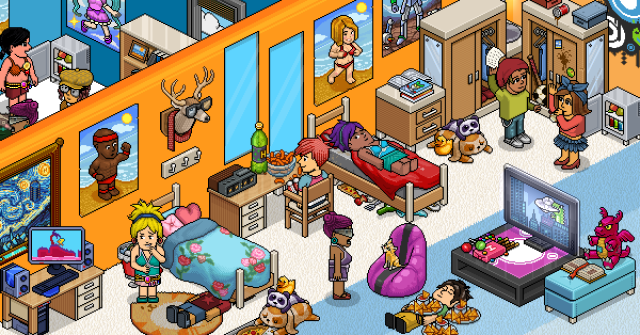
These days it seems like everybody and their corporate parent company is talking about "the metaverse" as the next big thing that's going to revolutionize our online lives. But everyone seems to have their own idea of what "the metaverse" means—that is, if they have any real idea what it means at all.

The term "metaverse" was originally coined in Neal Stephenson's seminal 1992 cyberpunk novel, Snow Crash. In the book, the Metaverse (always capitalized in Stephenson's fiction) is a shared "imaginary place" that's "made available to the public over the worldwide fiber-optics network" and projected onto virtual reality goggles. In it, developers can "build buildings, parks, signs, as well as things that do not exist in Reality, such as vast hovering overhead light shows, special neighborhoods where the rules of three-dimensional spacetime are ignored, and free-combat zones where people can go to hunt and kill each other."
Meta (formerly Facebook) CEO Mark Zuckerberg and his colleagues mentioned the word "metaverse" 80+ times in under 90 minutes during last week's Facebook Connect keynote presentation, where the company announced its new name. But Stephenson has made it abundantly clear that "there has been zero communication between me and FB & no biz relationship." That means Facebook's interpretation of "the metaverse" might end up being quite different from what Stephenson originally described.
While Meta's rebranding drives most of the metaverse conversation these days, the nearly 30 years since Snow Crash appeared have seen plenty of online networks that embody some or most of what Stephenson's book describes. These efforts to create "the metaverse" have included numerous online games and gathering places that captured some of the metaverse's most important concepts without ever using the term.
"But here we are," as Oculus consulting CTO John Carmack recently put it. "Mark Zuckerberg has decided that now is the time to build the metaverse, so enormous wheels are turning and resources are flowing and the effort is definitely going to be made."
So is the metaverse the next big advance that will revolutionize the way we all connect with each other? Is it just a repackaging of existing technologies into a new catch-all concept? Or is it just the latest buzzword marketing term?
The answer to that depends on what you mean by "metaverse."
Defining the metaverse
In his Facebook Connect keynote last week, Zuckerberg said that "the best way to understand the metaverse is to experience it yourself, but it's a little tough because it doesn't fully exist yet." From where we're sitting, asking people to try out some nonexistent thing doesn't seem like the best way to convey a full understanding of your bold new corporate direction.
Elsewhere in the keynote, Zuckerberg described a grandiose vision of the metaverse as an "even more immersive and embodied internet" where "you're gonna be able to do almost anything you can imagine—get together with friends and family, work, learn, play, shop, create—as well as entirely new categories that don't really fit how we think about computers or phones today." That helps a bit, but any description that includes the words "almost anything you can imagine" is so broad as to be almost meaningless.
After breaking down Meta's vision—and looking at the history of the metaverse both as a concept and as embodied multiple distinct online spaces—we've identified the following elements that, taken together, seem to define a metaverse. Anything that has any business using the term will include one or all of the following:
A shared social space with avatars to represent users
This basic building block of the metaverse concept is what Zuckerberg is talking about when he calls for a more "embodied" Internet. On a web site or social media network, you might be represented by a username or thumbnail picture. In the metaverse, you're represented by a customizable avatar that can move, speak, and/or perform animated actions.
These kinds of avatars have been common in all sorts of online gaming and social spaces since the '90s (anyone remember Habbo Hotel?). But an avatar's fidelity and abilities can vary greatly from service to service. Recent advances in virtual reality have enabled users to truly embody their fantastical avatars, seeing through their virtual eyes and using hand-tracking controllers to gesture and interact with virtual items. Spaces like VRChat show just how elaborate those VR avatars can now be.

A persistent "world" for the avatars to inhabit and interact with
In some cases, this means a virtual world that mimics the space constraints and land scarcity of the real world, as seen in Second Life's discrete plots of land. In other cases, it just means users sharing specially created spaces for a particular game or a special time-sensitive event, like recent multimedia concerts held in Fortnite.
In an idealized metaverse, every single user shares a single virtual world, where items and property persist for everyone between online sessions. For technical reasons, though, many modern metaverse-like spaces end up splitting users into sharded servers where a small subset of users can interact.
reader comments
322